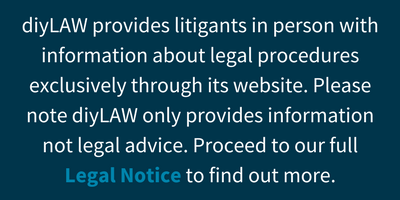Step 1: Talking it Through
The Context you’re in
Whatever your dispute, this is a time for you to be identifying people you trust and with whom you can discuss your situation. You need an objective viewpoint from someone who is more distant from the dispute.
A client once went to a lawyer, told his story, and asked what he should do. He was told he had a cast iron case, and should pursue it without delay. He thanked the lawyer, explained that he had just presented his opponent's arguments to the lawyer, and that he was now going to go and settle the claim.
Discussing the situation that you’re in will help you to better see and understand it. With some good dialogue, you may be able to find a way to resolve things before having to resort to 3rd party / legal action.
The Best Outcome you can expect from these activities
You will have clarified and taken into account the perspectives and views of all parties involved in the situation (including those of family members and friends) - resolving the situation without involving anyone else from outside.
The Next Best Outcome you can expect from these activities
You will have the dispute parameters better recorded and understood by all parties involved – or at least by YOUR side. So…
Why You Are Here
You are here because you have a dispute with another individual or organisation. You want to resolve it as easily and quickly as possible, and you are looking for some initial ideas, support and advice to help you speak with the other side in a constructive manner. Your best outcome will be to resolve the dispute without any 3rd party / legal involvement. Your next best outcome will be to have clarified on record the dispute parameters in a simple, understandable way.
What You Can Do (in 2 steps)
1. Identify and meet with family members and close friends who can help you check and increase your understanding of the situation
2. Set up a constructive dialogue with the other side to see if you can mutually come to a better understanding and perhaps agree or compromise with them in some way to end the dispute now
Now let’s look at how you can do this – in more detail…
How You Can Do It (in 4 steps)
1. Think about which trusted family members and close friends will take the time to discuss the situation with you, either face to face or by phone. Don’t restrict your list to those who will always agree with you on everything. Some can help you clarify your current perspective and others can help you consider additional perspectives
2. Before you meet, make a note of the key points of your situation as you understand it, and review it so that it makes sense as a story. When you meet with the family member or friend, ask them;
Do you understand the situation as I have described it?
Are there any gaps in my story, or is there anything you don’t understand?
Where do you think my position is strong?
Where do you think my position is weak?
What things do you think are missing from my story?
Do you know anyone who has been through something similar that I could speak to?
Where do you think the other side’s position is strong?
Where do you think the other side’s position is weak?
Do you think I have a strong argument? If so, why is it strong? If not, why is it weak?
If I meet with the person(s) from the other side, what questions do you think I should ask them?
3. Ask those who are from the opposing side in the situation (this may only be one person or one organisation) to meet with or at least speak with you. When they do, ask them questions such as…
Why, specifically, are you taking your position?
Do you understand my position? If not, how can I clarify it for you?
Is there any way we can compromise or meet in the middle in some way?
If we can’t manage to compromise, why is this - as specifically as possible?
Is there any part of my position you agree with or appreciate?
Which parts of my position do you disagree with or appreciate?
Is there any part of your position that you think I don’t understand or appreciate?
If we swapped positions, what would we be saying to each other?
4. Make notes of the key points of the meeting / discussion, including the dates and times and who was present, and share them with the other person(s) afterwards.
What’s Next If You Do This
You may find that by planning and holding these conversations you will have resolved your dispute. If not, then you will at least have recorded a comprehensive set of parameters with which to engage and informally involve a third party.
In either case, please let us know how you got on using the feedback button below.
And check out the other buttons above for additional support in this step.














